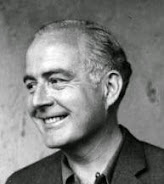Samuel Osborne Barber, the author of the famous lyrical piece Adagio for Strings, was born in Pennsylvania, USA, on March 9, 1910. His parents intended him to be a doctor, but before he was ten years old Samuel convinced them that his vocation was different. Despite everything, they had been listening to the songs that the little boy would compose at any time with an amazing naturalness. As if that was not enough, at the age of nine he sent his mother a letter informing her of his irrevocable decision:
"Dear Mother: I have written this to tell you my worrying secret. Now don't cry when you read it because it is neither yours nor my fault. I suppose I will have to tell it now without any nonsense. To begin with I was not meant to be an athlet [sic]. I was meant to be a composer, and will be I'm sure. I'll ask you one more thing.—Don't ask me to try to forget this unpleasant thing and go play football.—Please—Sometimes I've been worrying about this so much that it makes me mad (not very)."
Thus, at the age of fourteen, he entered the Curtis Institute of Music in Philadelphia, from which he graduated in 1935, shortly before his twenty-fifth birthday. After beginning a promising career as a singer and composer, in 1939 he returned to his alma mater to work for some time as a professor of orchestration. Among his students was a young Italian, Gian Carlo Menotti, with whom he soon discovered that he had many affinities, such as literature and the music of Brahms. Other affinities would later turn teacher and pupil into a sentimental couple.
A lyrical work of the twentieth century
Samuel Barber (1910 - 1981)
Barber enjoyed years of enormous success and recognition in the 1950s and 1960s, but later he had to face the controversy generated by the difficult qualification of his work, which was constantly questioned as to its quality, which for many proved
to be, at least, "not very modern".

No comments :
Post a Comment